Magazine
Design incorporates objects, people,
ideas based on the small pleasures of everyday life.
Meet your Beautiful design world with the DDP Design Fair.
-
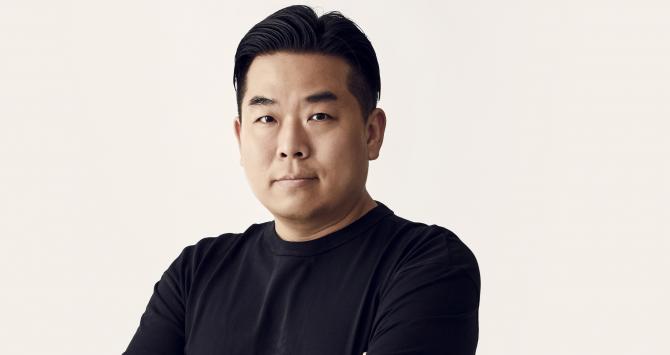
Personal Sense of Beauty Through Space
MAEZM CEO / Collaboration Curator Cho EunwhanI've once heard that it takes three generations to enjoy gourmet food. According to the person who said these words, for the first generation, taste is merely a process of getting nutrients from food. Even if they somehow pursue great taste, their first-hand experience of taste would have been very limited. For them, enjoying great taste would not have been a “process of realizing what a taste for high standards is”, but rather looking for what others find delicious. However, the next generation will become much more familiar with enjoying great taste by building upon the previous generation’s legacy of taste learned by trial and error. Meanwhile, for the third generation, taste is not something that can be pursued, but rather a familiar pastime that can be enjoyed from birth. For them, what is delicious or not tasty is not something that can be easily influenced by other people's opinions. Rather, it is a process of indulging taste buds for the ultimate taste sensation while realizing the original taste of the ingredients. This may seem a bit far-fetched, but in some respects, as someone working in the industry, I think that enjoying and relishing spatial design also goes through a similar process. Enjoying space also refers to the pursuit of the ultimate aesthetic experience, especially in an era where people focus on quality of life rather than bread-and-butter issues, resulting from the country’s economic power or high standard of culture. My main areas of expertise include spatial planning, interior design, architectural design and exhibition space design, which all require a huge amount of budget and time compared to other design fields, so the average age of my clients is relatively high. However, I am starting to feel a subtle change these days. Most of the clients I've met over the past decade were affluent people in their fifties and sixties, but I am recently working with clients who are close to my age. It is obvious to see that the change in demographics of main consumers is driving the shift of capital flows. However, during this process, I feel that the changes in their spatial needs and expectations are taking place at a fast pace. Those who have maintained better conditions to enjoy space for a longer period of time than the previous generation know how to think rationally and make much better choices than the previous generation even in terms of what is formatively perfect. As a result, I could meet quite a few clients who viewed space with a better eye than some of the designers with a complacent attitude. This is a very positive change in the field of spatial design, where the client's perspective can have a greater impact on the outcome than the designer's efforts due to its unique design process. However, extending my previous analogy to this change, it is difficult to conclude that they are the third generation enjoying spatial aesthetics. It is because the countless example images clients bring to explain what they want for their space or the spaces filled with mid-century modern furniture look quite sophisticated, but they do not fully represent their individuality and concerns. As we are seeing more and more hip and trendy places around us these days, this makes me think it would be better if at least a private space, such as a living space, could freely pursue a sense of uniqueness and specialness that represents the occupant, rather than simply being stylish and sophisticated. Those who contemplate and enjoy space do not tend to decorate their space with attractive things commonly seen in fashion magazines. Instead, they try to let their space show a unique vibe so that other people can notice their personality and character at the moment they enter the space. This kind of space may actually look distracting, but it has completeness, which makes it difficult to add or remove something else. Unless you are working as a spatial designer for a living, it would be great to have some time to freshen up ourselves while refining the space around us. The end result of spatial design, a process of focusing entirely on yourself, will eventually lead to a high-quality design that offers an enjoyable experience. Major domestic and international design events such as the DDP Design Fair will provide opportunities that stimulate and promote designers and consumers to discover what suits their unique taste and orientation. These special occasions are opportunities that represent all the thoughts and hard work of those who prepared for the events, so they show the true colors of each and every element, but sometimes various outcomes convey a common message which defines the times in which we live. In this way, we can clearly see how we are different from others, instead of noticing what the current trends are from our surroundings. The time has arrived for us to change our own spaces, just by being ourselves without thinking about others, and enjoy the fascination of spatial design for our own purpose. As a first step to demonstrate your personal sense of beauty through space, I hope you take this opportunity to think about what kind of person you are today and how your space looks now.
2022-08-24125 -
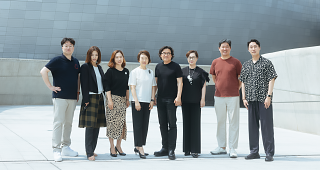
Overall Review of 2021 DDP Design Fair by Curators
Getting ready to take the event to a bigger stage as one of the world’s best awardsThe 2021 DDP Design Fair is coming to an end. Let’s hear from the curators of each category (Furniture, Lifestyle & Living, Lighting, Career, Marketing and Space) about the 2021 DDP Design Fair. The curators have spared no effort to support designers and makers who have worked hard for over a year by pairing them into teams and advising on the curatorial direction.“Seeing is believing”Career Curator Kim Nayoung (Director of Chong Kun Dang Healthcare Design Department)The 2021 DDP Design Fair opened up greater possibilities and certainties against the uncertainties of the future. I believe that the absolute value and essence of design is to create a better world, environment and society, and I am glad to see our efforts were successful. What we could do at this point of our journey was discovering a meaning from our dream by adding reasonable possibilities to the uncertainties of the future. The DDP Young Designer Job Fair was created to encourage young people to think about their future based on the career and life experiences of professionals who are already working in the field. Living a happy life while following your passion will help you to view the field of design from a broader perspective and shape your outlook on the world. The message of “seeing is believing” was demonstrated through the 2021 DDP Design Fair.Achieving design convergence with stability amidst uncertaintiesMarketing Curator Park Jeongho (Vice President of KFDA, Professor of Myongji University)Due to the COVID-19 pandemic, planning and preparing for an in-person event have meant carrying a project in the midst of great uncertainty. This event was especially meaningful since we have witnessed active participation as much as the previous fairs despite the limitation of visitors. In particular, initiating projects aimed at creating jobs for young people through the 2021 DDP Design Fair enhanced the social value as well. Personally, I had high expectations for this fair since I have great interest in researching design-related policies and fostering the growth of the design industry. Convergence between different sectors is now a worldwide trend not only in the design industry but also in other industries. The design industry is also working on a lot of collaborations, such as brand collaborations between different design fields. I think the DDP Design Fair’s matching program is a theme that goes along with this global trend. Since this is an event that involves the government’s support for small business owners, I think the original purpose of the fair should be focused on encouraging participation, both virtual and in-person, of citizens as much as possible.An opportunity that has raised the stature of designFurniture Curator Ha Jihoon (Professor of Kaywon University of Art & Design) This year’s fair holds greater significance since it was hosted in-person, unlike last year. Each field has worked hard to make a greater whole even in difficult situations, and I hope to see great results in the future. When there is consensus about the importance of design, there will be more companies participating in this event and more great results. First of all, we need to pay attention to “accumulation”. There was more responsibility placed on the roles of planning all products of many designers and makers who participated in the 2021 DDP Design Fair and managing the entire process until the products are showcased in the exhibition. As the Furniture Curator, I was responsible for pairing companies that can promote industrial development in the field with designers who can play a role in further developing such companies. It was a shame that the exhibition was unfortunately not held in person last year. People often get the scale of furniture wrong since there is a huge difference between seeing furniture in person and seeing furniture through the screen. There is so much meaning in the fact that we were able to create results with more focus on the physical exhibition. I think this fair served as an opportunity for the field of furniture to achieve further progress by showcasing the actual pieces of furniture to citizens and stakeholders.An opportunity that has added fascination to products through collaborationsLifestyle & Living Curator Han Kyungha (CEO of WOOFER DESIGN)I believe that the 2021 DDP Design Fair was held in line with the purpose of revitalizing the manufacturing industry of central Seoul and further developing the design industry despite the COVID-19 pandemic. The fair was planned and implemented based on two tracks — one for virtual exhibition and one for in-person exhibition — so that more people were able to enjoy the fair through various channels. There were more unique designs grabbing the attention of people compared to the previous year. Furniture pieces made by young designers definitely stood out, especially in terms of quality. Bold material selection and new suggestions for functionality are the best examples that show the true potential of our designs. There are some lifestyle products that are not perfect in terms of quality. This is because those products require complex manufacturing processes and parts and there are wide variations in conditions from manufacturer to manufacturer. I think the Lifestyle & Living category should also focus more on its strengths by narrowing down the scope decisively and keeping quality as the top priority for the next fair.A space filled with stories and participation from various peopleSpace Curator Lee Kanghyun (Professor of Hongik University)Besides the exhibition, I tried to fill the space with more stories and participation from various people. For stories, we created a space for designers where they can share how their design is translated into a product and how it evolved into the final version, and envisioned how the space would blend naturally with the best products selected from the participating teams. What makes this year’s DDP Design Fair special is the unexpected connection and the expansion of relationship. We tried to show the processes of how to create new things with a combination of completely different things. Our top priority was to make the collaboration teams stand out and then represent a new image through collaborations between designers and makers and go beyond by encouraging companies to present a lifestyle, more than just a product.Interesting stories behind products with various materialsLifestyle & Living Curator Sohn Donghoon (CEO of Atelier Sohn)Above all, I would like to thank the chief director and the curators of each category. Since this is the third year of the event, I think the event has made a leap forward in terms of scale and quality. That's why I already feel a greater sense of responsibility for next year's fair. While we prepared for this year's fair, we could see the capabilities of designers and makers who participated in this event. I think our mission is to build a strong relationship with the participants for the fair’s steady growth. This year’s event was held in-person so the curators of each category were able to pay attention to the quality of the actual products and make sure everything went smoothly for the event.A journey of searching for something differentLighting Curator Jeong Mee (CEO of EON SLD) The collaborations based on various ideas are evolving year after year. The fair has always been pursuing diversity and scalability of ideas. From this point of view, the fair is still going through changes and making further progress. This year, the exhibition space was filled with the results of collaborations and a variety of new products showcased by companies. As a result, we were able to see more high-quality products that focused more on the details than usual. I hope all these stimuli serve as a positive influence to designers, manufacturers and small business owners in the future. Furniture was the category that featured the most various ideas and great results. I think the diversity of materials and forms created a perfect balance. We tried to allocate more space for the Lighting category compared to last year and emphasized the importance of having more fun with light and changing the space in various ways. I think Lifestyle & Living was the most challenging category because of its wide variety and diversity. Rather than products that are faithful to the basics and made of recyclable materials, attractive products that are sought after stood out from the rest.
2021-12-06311 -
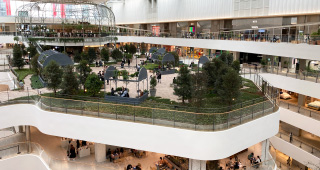
Samhwa Paints Color Design Center’s Color Trend Forecast
SHIFT: 2022-23 Color DirectionsMetaverse, space, flex-pivot, hyper-personalization and ethics are the changes in the global industry that will have a significant impact on our lives in 2022-23.As digitalization is taking place at an unprecedented pace due to the pandemic, the world is heading toward the era of metaverse. Metaverse, which was once considered as a technology of the distant future barely a decade ago, has already begun to be applied to our everyday lives. Each industry is trying really hard to stay ahead of the game and dominate the metaverse technologies and market.One of the biggest changes coincided with digitalization is the change of space. A department store is more than just a retail space. It is becoming a large-scale cultural complex where people can eat out, rest and enjoy culture. Residential space has become the center of all activities. Business environment and lifestyle are becoming more flexible and changing at a rapid pace. There are more people who want to work for IT platform companies instead of large corporations, which used to be dream companies for many people. Virtual influencers created by artificial intelligence started to appear out of nowhere.The increase of single-person households and the acceleration of personalization were already under way, however, this trend was also accelerated by the pandemic. Due to hyper-personalization, companies need to create more targeted and personalized marketing campaigns. This is why data and algorithms hold greater significance these days. ESG (Environment, Social and Governance) is the new buzzword in every industry. Ethical values such as value-based consumption, design for all and circular design have become more important than anything else.Based on such changes in the global industry, I would like to propose five color trends of 2022-23 you definitely should pay attention to.First, Real-worldly Digital.Innovative technologies such as metaverse, virtual reality, augmented reality and blockchain have improved leaps and bounds in recent years. You can witness the real world being digitalized and the real world mixed with the digital world. That’s why surreal digital colors are also used in real spaces to give off a more modern and innovative feel. They imply positive expectations towards the future-oriented technology and represent immersive, sensual and interactive experiences into the digital world. This palette includes a combination of colors mixed with light, which symbolizes digital elements of virtual experience, high-tech and fantasy mood, and digital colors that are more visible by the use of lighting and metallic materials.Second, Feeling Well.This palette gives a comfortable and bright feeling, and a sense of stability based a pleasant feeling of comfort. Whitish space and products always create a bright atmosphere and seem to improve hygiene and immunity. Clear and transparent pastel colors, and the subtle gradation color scheme are the basic main colors. Transparent liquid-like materials, reflective effects of finishing and digital effects are used as well.Third, New Way.This color palette makes everyday life new and inspires imagination into existing designs. These colors add individuality to all spaces such as residential spaces, retail spaces and public spaces, and create simple but unique styles. You can try new things with bold color variations that inspire creative imagination even into a space filled with ordinary and everyday materials.Fourth, Chord Keeping. This color palette represents the coexistence of opposing values such as technology and nature, premium and handmade. Due to the importance of ESG and the growing demand for a balanced coexistence of cities and nature, there is a lot of research and cases about eco-friendly buildings. Exposing the patterns of upcycled materials is a trend that has been going on for several years. It implies the connection and harmony between cities and nature, wellness based on eco-friendly designs and sustainability. It is expressed with natural colors and materials that capture the properties of the fertile nature, robustness and durability.Fifth, Still Placid.This color palette represents calmness, serenity and placidness. The recreational and healing effect of nature has become the most essential element, especially in the pandemic era, and an important element in our daily lives. Toned-down pastel colors that create a comfortable and cozy vibe give off a soft and cozy feeling. It uses the basic beige and gray options, as well as greenish gray and bluish gray colors, and harmonizes the tone-in-tone color scheme, warm materials and simple design.“SHIFT: 2022-23 Color Direction” proposes a color direction that can be applied to each industry including architecture, interior, product design and digital content. We hope this serves as a useful guide and offers inspiration to experts in each industry.
2021-12-06347 -
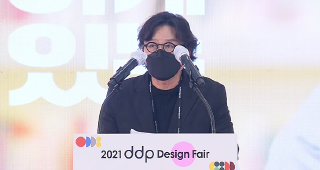
Establishing a New Value to Make Everyday Life Beautiful and Make Life Happier
Overall Review of 2021 DDP Design Fair by Gilhyung LeeOverall Review of 2021 DDP Design FairThe 2021 DDP Design Fair presented a “Wonderful Life” to citizens who have been hit hard by the COVID-19 pandemic, along with the efforts of makers and designers. This year’s fair showed the new value of design, which makes life happier when everyday life becomes beautiful through design. The circular space of the theme hall, the Collaboration Zone of makers and designers, was able to increase the spotlight on the exhibition. The garden shelter within the exhibition space seems to be brought directly from the nature. It means more than a rest zone for visitors and offers a space where visitors can regain energy and get away from the stress caused by the COVID-19 pandemic and rest their tired legs while looking around the exhibition. On the other hand, it would have been better if the space between the Launching Zone and the Trend Zone had been connected in a more seamless way. Seamless spatial connection remains a priority for the DDP Design Fair for the sustainable development with design companies and large companies in the future.Expectations for 2022 DDP Design FairThe DDP Design Fair should remain as a venue which can boost the industry’s value with future-oriented business and new content led by the design industry. In addition, the fair should encourage design’s participation in the society, share the trends of the time and include design management based on ESG (Environmental, Social and Corporate Governance). This means taking a step forward by addressing social issues with safe codes for responding to crises, developing eco-friendly materials with green design solutions, establishing a governance system for the development of the design industry, and building a global network. The fair is expected to broaden its support for business lounges and global distribution, expand the base of the design market and eventually strengthen the DDP's status as an organization that can lead Seoul citizens and global trends.
2021-11-16315 -
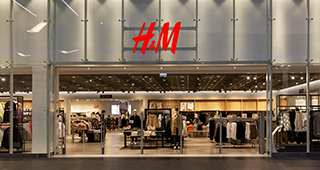
Reading the Hidden Power of Space Design from SPA Brand Stores
A more advanced strategy using consumer psychologyWritten by Jungho Park (Professor of Myongji University)Specialty store retailers of private label apparel (SPA) or fast fashion brands refer to clothing brands that directly manage the entire process from planning and design to production and manufacturing to distribution and sales. Uniqlo, Zara and H&M are well known examples of SPA brands. They have been popular around the world since they have the advantage of being able to mass produce new products within about 10 days according to the demand and trends of the market.However, in-store marketing strategies of these SPA brands are quite similar. Even though they sell inexpensive clothes, their stores feature a sophisticated atmosphere. They even operate huge flagship stores. Since it is difficult to make a lot of profit by selling cheap clothes, operating huge and luxurious stores can lead to greater financial loss. However, they operate on a hidden strategy using consumer psychology. SPA brands operate huge flagship stores to encourage consumers to stay longer and shop longer. If the store is small, shoppers are highly likely to take a look at clothes near the entrance and pass by the store. If the store is large, it is easy to attract customers into the store since it is hard for them to see clothes deep inside the store without stepping inside. Once shoppers step inside the store, they are more likely to choose and try on a variety of clothes from the rack. In most cases, people casually buy fast fashion clothes on the fly when they find something they like in the store. Therefore, encouraging consumers to look through clothes and stay longer would lead them to buy things on impulse.
2021-11-16228 -

The DDP Design Fair serves as a stepping stone towards coexistence and great strides of progress and represents Seoul, up and running again
Seoul Mayor Sehoon OhThe DDP Design Fair of 2021 is the epitome of the great design sensibility of designers and makers. The results of collaborations unveiled through this year’s DDP Design Fair are innovative products that have never existed before and have been developed and produced by makers who were looking for design ideas and designers who were seeking manufacturing support. I believe the products hold great significance and value. The DDP Design Fair is a meaningful project that strengthens the design competitiveness of small businesses who are considered as the veins of local economies, provides job opportunities to young design graduates and creates a healthy and virtuous cycle in the design industry by offering a career ladder to climb. I hope this event serves as a stepping stone towards coexistence and great strides of progress to support the growth of small businesses and enhance the competitiveness of the design industry in Korea. The Seoul Metropolitan Government will offer full support and commitment to make this happen.Recently, the Seoul Metropolitan Government announced “Seoul Vision 2030”, the master plan of the city government's policy direction over the next decade for getting Seoul up and running again. Based on the vision of “Seoul, up and running again for fairness”, the city government is planning to make Seoul the city of coexistence, a future emotional city, a global leader and a safe city. In particular, our goal is to make Seoul an attractive future emotional city that everyone around the world wants to visit, live, and invest in, and the DDP will play a central role in these efforts.The DDP is a design landmark and one of the most attractive assets of Seoul that was built under the vision of “World Design Capital” about ten years ago. To strengthen its role as a platform for the design industry, the DDP will be developed into a Larchiveum (a combination of the words library, archives and museum) that specializes in design and supports technology development, the cultivation of talented personnel and the marketing of young startups and small business owners. Please show some love and support. Congratulations on the opening of the DDP Best Design Awards 2021. I would like to sincerely congratulate the winners of the DDP Design Fair’s Best Design Awards. I would also like to thank all participants for their creative ideas and wonderful works, as well as the experts and citizens who participated in the process for selecting the winners.
2021-11-11217 -
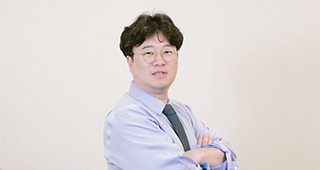
Technology-based Startup vs Design-based Startup
The importance of noticing the difference between design and technology in advanceWritten by Jungho Park (Professor of Myongji University)For technology-based startups, it takes a lot of time and money to launch a product. For example, it takes an average of 16 years to develop a new drug. An average of $800 million is invested during the development period. It also takes an average of $200-300 million to develop an online game. The game development period ranges from 4 years to as long as 10 years.Of course, the examples mentioned above represent the industry which requires a lot of time and cost for development. What is clear is that it takes much higher cost and longer time for R&D, especially for technology-based startups when compared to design-based startups. Anyone who is thinking about starting a business based on technology needs to be aware of this.The completion of development does not mean everything is all set. For technology-based startups, what is most important is performing a trial run under actual conditions as well as filing a patent application. Make sure that the technologies and products you have developedwork well in real world conditions. A sneaker startup, which was once popular, made a crucial mistake of producing sneakers made of fabric that bleeds color in the wash. An MP3 player manufacturer, which was widely acclaimed for its high quality, was eventually shunned by consumers because its MP3 player did not work in subfreezing weather. It is important to do a trial run for a considerable period of time as long as the development period since missing small details can lead to irreversible consequences.It is easy to think that it is much easier to create a new product by combining technologies that already exist in the market than investing a lot of time and money to develop a new technology but this method also requires a considerable amount of time and money.Design-based startups are different. Unlike technology R&D, design development does not require a variety of research equipment and facilities. The duration of design development varies greatly among designs. Designs based on of a lot of thought and effort lead to a successful outcome, but sometimes designs created by an intuitive spark resonate with consumers.Design-based startups should beware of counterfeits which are commonly referred to as “knock-offs”. It is more difficult to properly protect designs under intellectual property rights than technologies. Unless they are exactly the same, it is not easy to claim that someone has infringed on the intellectual property rights even when the design is somewhat similar to your work.Many startup founders endure through extremely difficult situations to create a technology or design that provides extraordinary added value. Understanding the main points that are mentioned above and noticing the difference between design and technology in advance will be perhaps the easiest way to overcome difficulties.
2021-10-27219 -
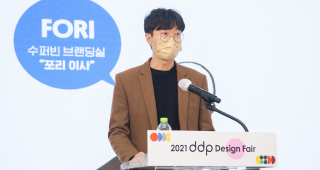
Turning waste into money. Making recycling fun.
SuperBin - Waste cultureFori (Head of SuperBin’s Branding Team) I’m responsible for SuperBin’s overall branding strategy and design projects. SuperBin is a company that practices the value of “turning waste into money and making recycling fun”. Waste is a very serious problem across the globe. In the past, garbage was out of sight, out of mind for many individuals. They used to think the problem was gone once they take out and dispose of their garbage and their space becomes clean and pleasant. However, the problem of waste has become an increasingly serious issue and is posing a threat to human life again. It is not only causing problems to human beings but also starting to destroy the entire ecosystem. In particular, many Southeast Asian countries have been accepting container loads of waste from advanced countries and burying them somewhere in return for subsidies. These days, people sort and dispose of recyclable plastic waste. They even feel a sense of accomplishment when they separate their trash into different bins for recycling. However, have you ever thought about where all the waste goes and what happens to it?SuperBin was established to find ways to create a positive economic structure. It took about five years to start the business, and it has evolved into what you see now. SuperBin diagnosed that the existing waste sorting system is not functioning properly, identified that the waste sorted by the system introduced by the Ministry of Environment cannot be recycled and concluded that companies will not reuse recyclable materials if they are not sorted properly at the first place. That’s why we tried to focus on establishing an effective waste sorting process to start off on the right foot. With AI technology, we tried to build a process to obtain clean resources, which used to be sorted manually, deliver them through an accurate logistics system without letting different types of materials being mixed with each other, process them into useful materials and supply them to companies to manufacture products. We are designing a system to create a circular economy and reduce the amount of waste sent to landfill, incinerated or ended up in oceans or mountains.First of all, we hope the government also joins the movement to install reverse vending machines. Second, we hope the citizens are eager to participate. If the citizens take an active part in this movement, local governments and companies will have no choice but to follow. For consumers, the best way to impact large companies is not purchasing products that are designed to be eco-friendly. To make profit, companies cannot help but consider the environmental impacts. Therefore, we think that environmental problems can be solved only when the government, companies and consumers bring change together.
2021-10-26263





